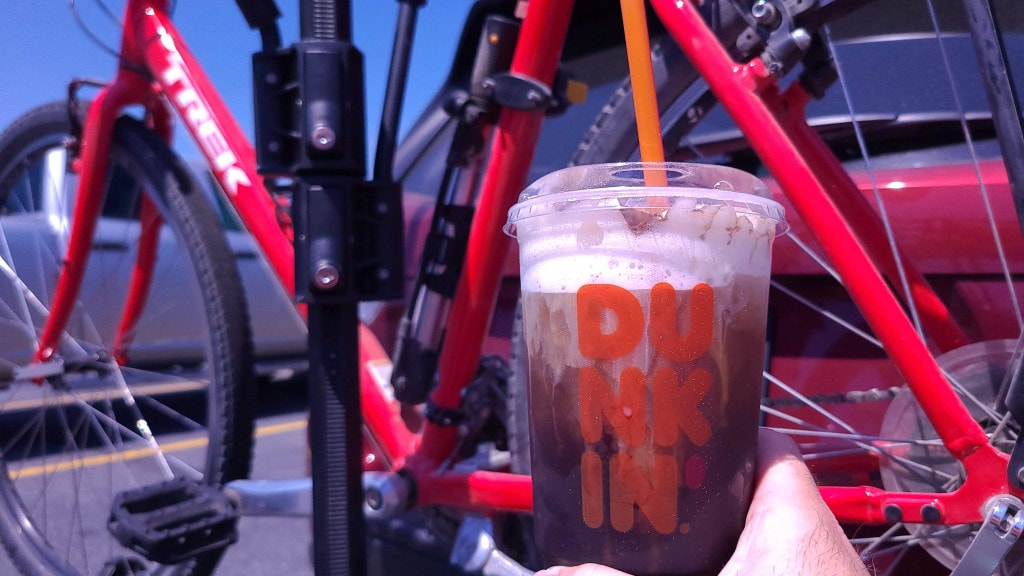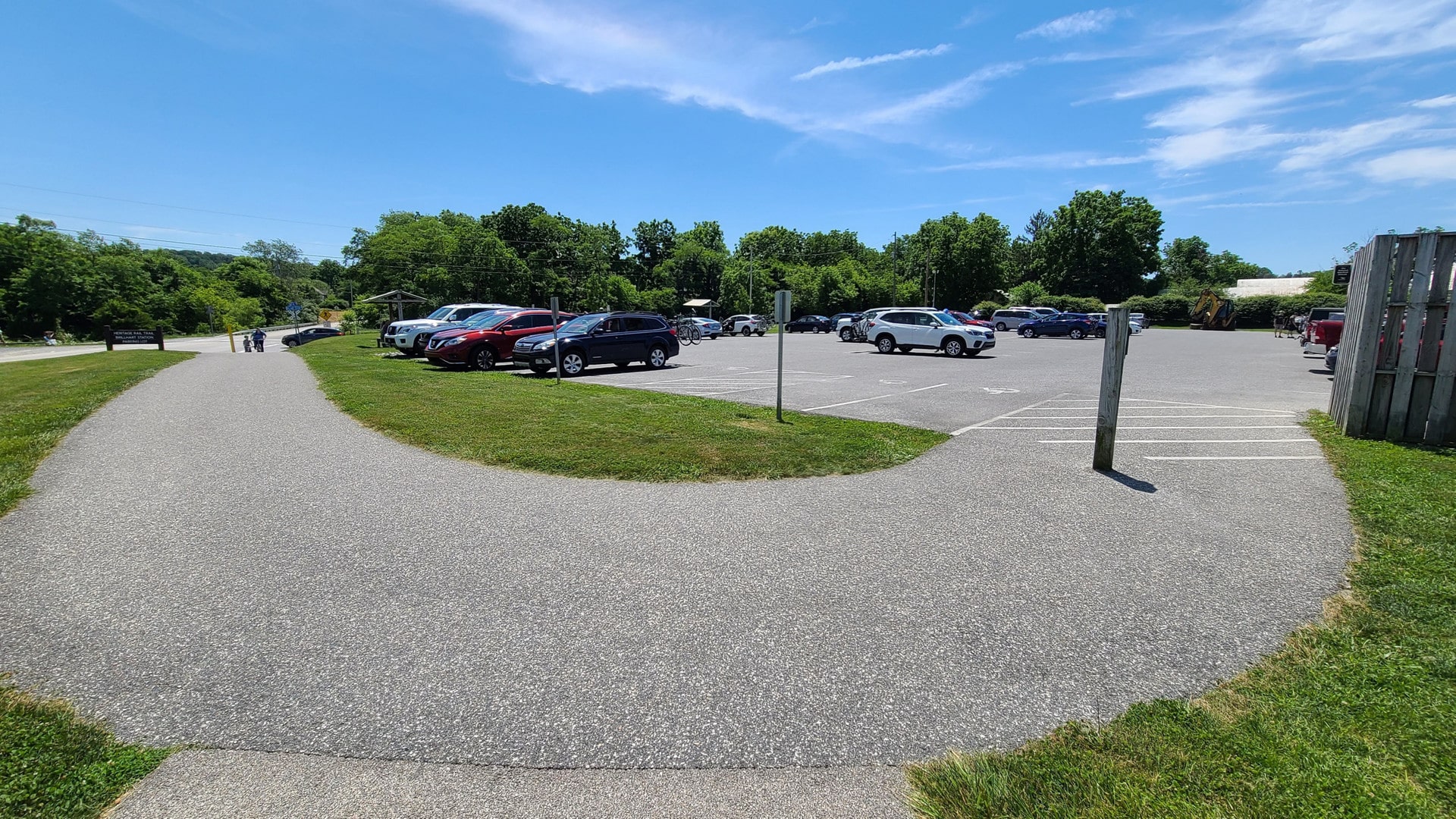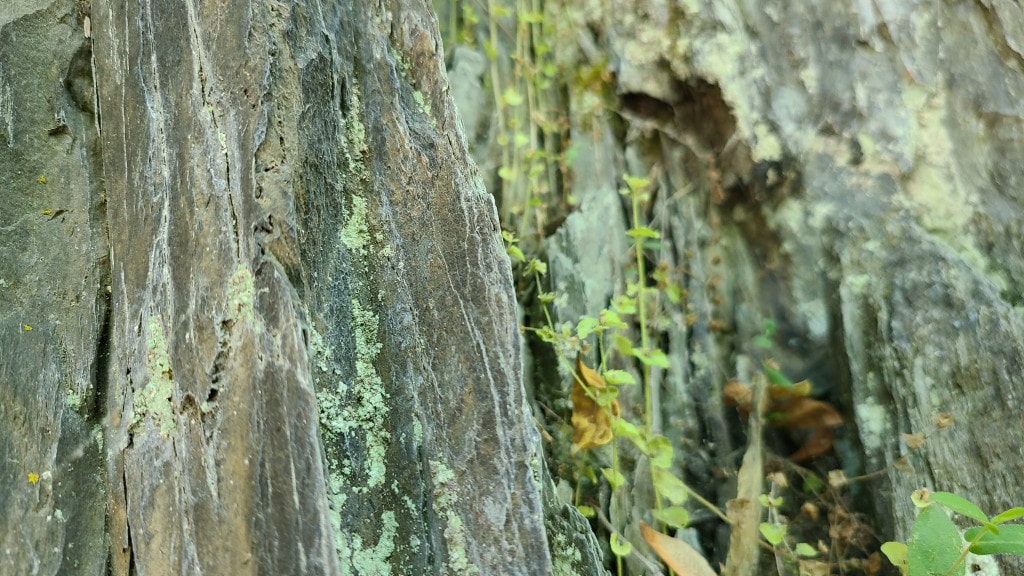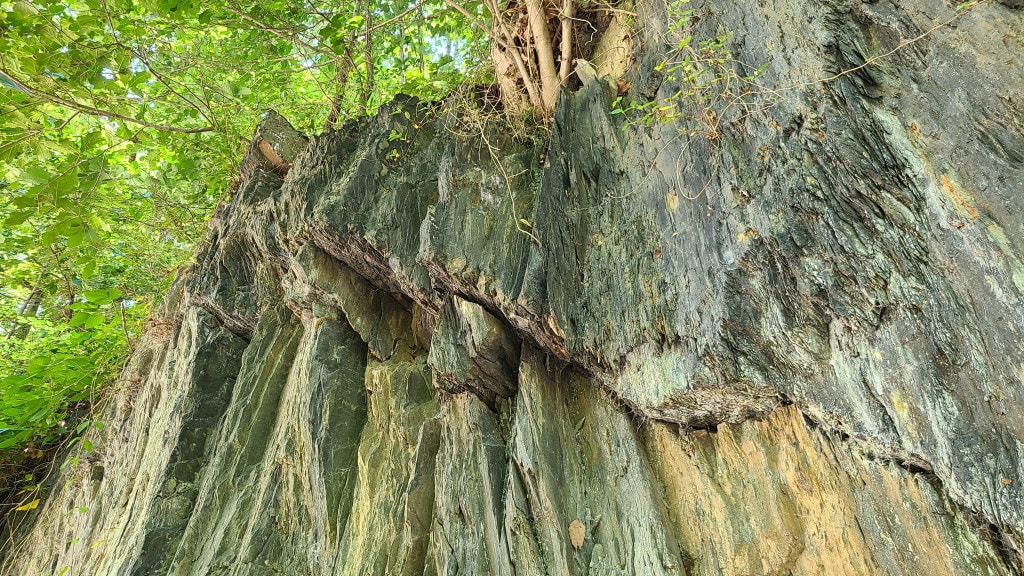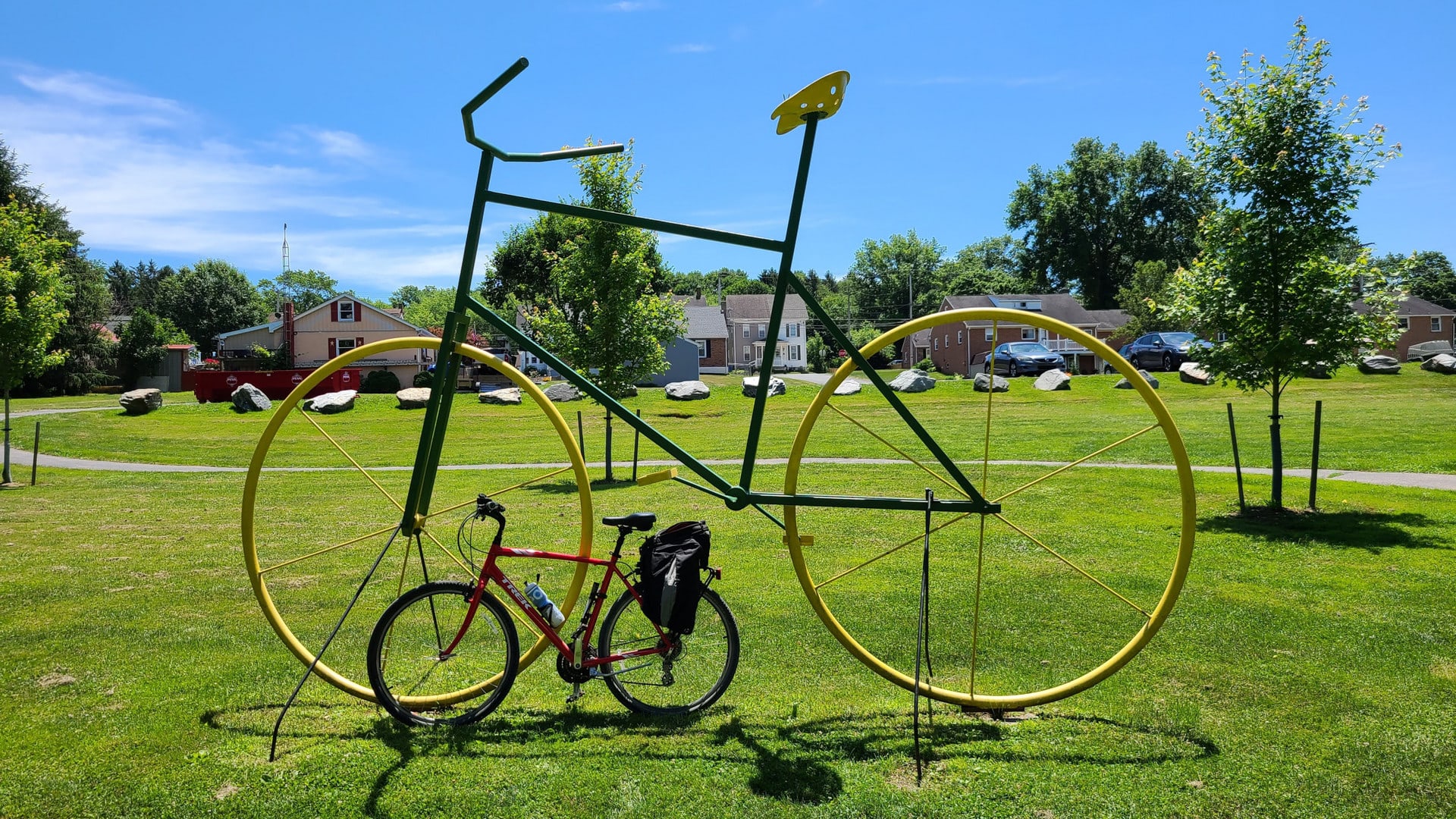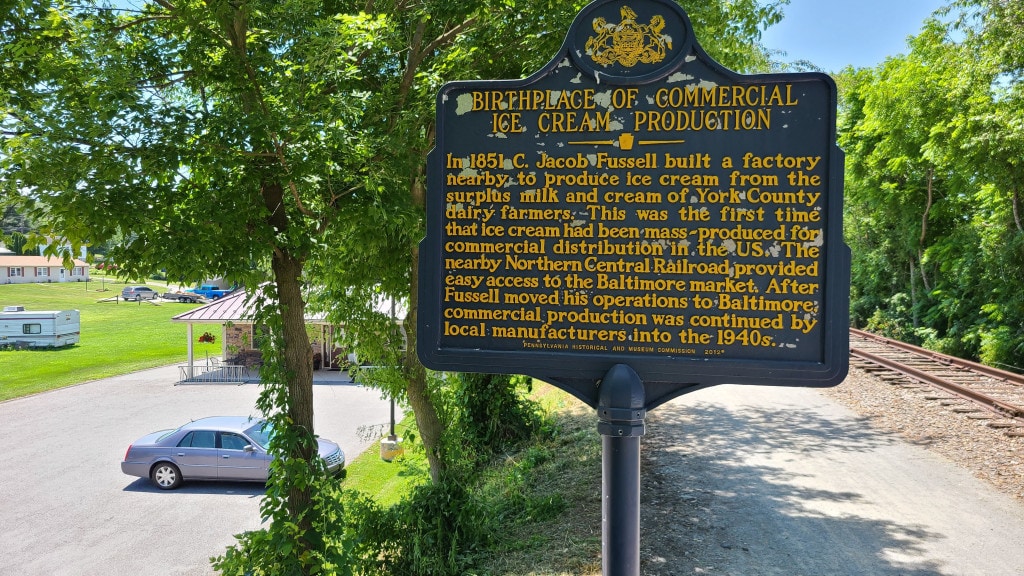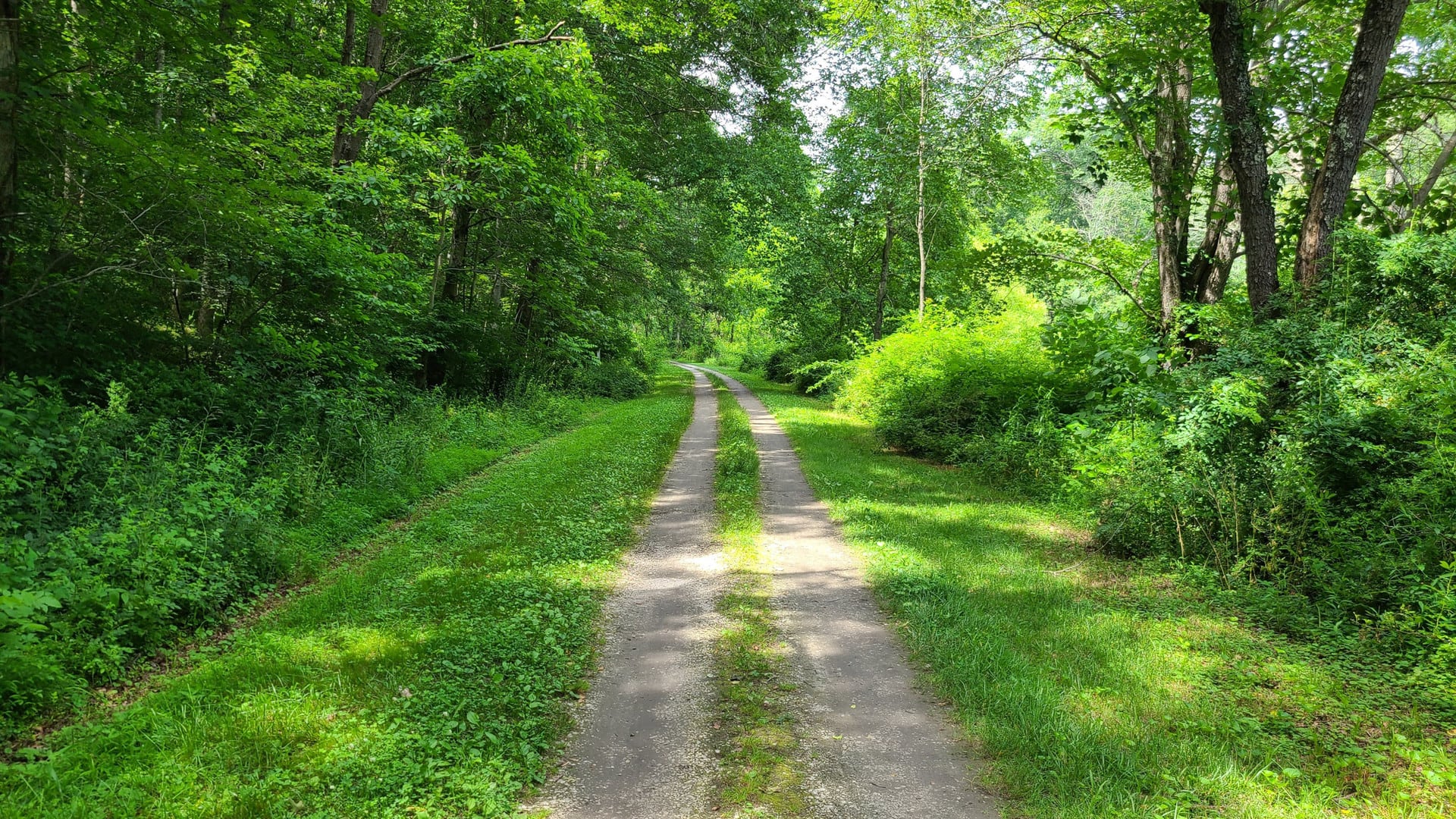Just down the road in York County sits a 47-mile trail that connects the city of York PA with Hunt Valley MD. Starting in John Rudy Park, the York Heritage Rail Trail trail snakes through downtown York, Glen Rock, New Freedom, and the Maryland wilds along the path of the old Northern Central Railway. At the Mason Dixon Line the trail officially terminates and links up with the Torrey C Brown Rail Trail for the Maryland segment. I’ve ridden parts of the trail before but never the entire thing in one shot — at least until this past weekend.
Full disclosure: I actually started at the Brillhart Station trailhead. The ten miles north of here offer a nice ride through downtown York and the park system north of I-83, and are absolutely worth a trip. But the trail’s proximity to Codorus Creek can make that stretch extremely buggy. Imagine riding through a blizzard, except instead of snow it’s mayflies and mosquitos and who knows what else. Brillhart Station, on the other hand, has ample parking, easy trail access, and WiFi. It’s been my go-to trailhead every time I ride this trail.
The Northern Central Railway was finished in 1858. It played a key role in the Civil War by ferrying troops and supplies between Sunbury and Washington DC. In 1972, Hurricane Agnes took out a few key bridges along the route. They weren’t profitable to replace, so that spelled the end of the NCR. This is also why taking Amtrak from Harrisburg to Baltimore requires a visit to Philly first.
As a side note, I decided to try out the super-cheap pannier I bought from Amazon. It got sucked into the spokes immediately. Fortunately, my wife convinced me to bring my Bontrager pannier along just in case, so I wasn’t stuck riding without my gear.
The first three miles south of Brillhart Station provide a shady, relaxing start to the ride. The trail surface was crushed gravel almost entirely flanked by trees. You’ve got a gentle uphill climb all the way to New Freedom, but it’s barely noticeable. The rock lining the trail walls is something I haven’t seen before. The rock forms sharp vertical strata that didn’t feel fragile to the touch. This might be crystalline schist.
As the trail winds south, plaques and markers highlight historic points of interest from former station locations to refueling platforms. My favorite, naturally, is Howard Tunnel:
Howard Tunnel opened to railroad traffic in 1838 and is still in use today, making it the second-oldest still-active railroad tunnel in the US. In the 1860s it was rebuilt to accommodate two tracks, and most recently it was refurbished for rail trail use in 2003. During the Civil War, the tunnel was a frequent target of Confederate troops. The 20th Pennsylvania Volunteer Militia repelled attacks and kept the vital lifeline open. Today the tunnel is in excellent condition.
If you’re a nervous first-timer, or if you’re bringing along young children, the tunnel is only two miles south of Brillhart Station. That’s about a 35-minute ride at walking speed, making this a great segment for even the slowest set of training wheels.
After the tunnel, the trail loses much of its shade until you reach the state border. Keep going through some farmland and you’ll reach the Seven Valleys trailhead. You’ll spot it immediately by the three giant bikes parked along the route:
Seven Valleys makes a great entry point if you’re unsure of your endurance or ability and want some flexible options. Heading south, it’s it’s 5.5 miles to Glen Rock and 12 miles to the Maryland border, giving you easy landmarks for an 11- or 24-mile roundtrip ride. If you polish those off and want to go a little further, you’re 3.5 miles south of Howard Tunnel and about 7.5 miles south of York.
Whichever direction you go or wherever you start from, the trail has a lot to see. North of the Mason Dixon line, the trail runs through farmland and small towns, giving you plenty of historic markers and places to stop for a break. Take advantage of these while you can; the trail changes dramatically once you cross into Maryland.
Glen Rock is one of the first “big” towns you’ll come to along the trail, and it’s one of only two with multiple food & drink options. I need to get back here and check out the B&B but if you’re just looking for something quick, there’s a sub shop, a pizza shop, an ice cream shop with a walk-up window, and a convenience store. There’s a bar a little further along, but I didn’t see any bike racks there.
On the north side of Glen Rock is Ruins Hall. It’s an outdoor art installation that takes over the remains of an industrial complex dating back to the 1870s. Over the years the grounds held factories for sashes (presumably the window kind), carriages, dining room furniture, over the decaying skeleton of an old industrial building. The vast majority of the works are your run-of-the-mill tagging / vandalism variety, but there’s some good art in there as well. The grounds also plays host to outdoor events and has big plans for the future.
Also in Glen Rock is this library. Every time I ride past it I feel like I’m riding onto the set of Fargo. Or a Wes Anderson film. Or is it Wes Craven? I can never tell them apart.
For the rest of its journey through Pennsylvania, the small rail villages are punctuated with small art installations — some of which are easier to spot than others.
New Freedom is the last town you come to before hitting the Maryland border. This is important: if you’re even remotely hungry, thirsty, bored, or in need of a break, stop here. This is the last real town you’re going to hit before Hunt Valley. You’ve got your choice of several quick-serve restaurants to choose from including a pizza joint, an ice cream stand, a general cafe, and a coffee roaster / deli. There’s also a bike shop and another ice cream shop along E Franklin Street. Some of the establishments lacked bike racks, so be prepared.
This is where I start to have mixed feelings about the trail. You know how driving into Maryland on 83 is like driving into an entirely new country? Where instead a pothole-ridden parking lot, I-83 is actually a drivable road? The rail trail is pretty much the opposite.
In Pennsylvania, you’ve got nice crushed gravel trails that are generously cleared and graded, with plenty of room for passing. Small towns, historical markers, and art installations dot the trail.
In Maryland, you’re on what is basically a dirt Jeep path. This really changes the dynamic of the trail. That’s not automatically a bad thing, but it’s worth being aware of as you head down. The ride was a little rougher in a few spots but I’d have no concerns taking a road bike on here.
Nearly all of the track has been removed on the Maryland side. The only indication you have that this was once a critical railroad line is a steady parade of mile markers (from Washington DC, to Sunbury PA) and the occasional bridge.

The Torrey C Brown trail (the Maryland half of the trail, if you’re confused) is literally a different trail than the York Heritage Trail, so it’s not surprising that it has such a different feel. While I wouldn’t have minded some additional small town stops to pause and decompress for a bit, I didn’t mind the all-natural environment in the least.
As the mile markers ticked down and I landed in Hunt Valley, I messaged my wife on Signal to meet me at the Hunt Valley parking lot. The lot was absolutely packed at 5 PM on that Friday afternoon, so I rode ahead a mile to one of the nearby strip malls. Despite that road being made exclusively out of blind hills and blind curves, I made it safely for my post-ride recovery Dunkin’.
